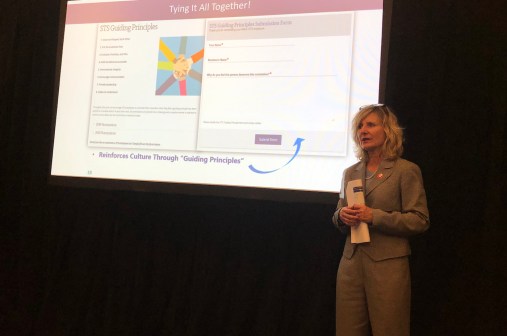Government is hiring more, but still struggling to fill IT roles

State and local governments often struggle with outdated technology infrastructure, middling enterprise performance, and fending off a growing barrage of cyberattacks. One reason is a lack of technical talent. New survey data shared this week in a workforce-themed webinar hosted by the National Association of State Chief Information Officers did not bode particularly well for government leaders who continue to struggle to get the help they need.
Gerald Young, a researcher with the Center for State and Local Government Excellence, said that the most recent data collected from government leaders around the U.S. shows that although governments are hiring more than they have in previous years, IT positions remain particularly hard to fill.
Among all “hard to fill” positions, IT roles ranked in the highest spots on the survey — general IT staff, network administrators, web developers, and IT support all ranked in the top 7, outpacing the demand in fields like engineering and other skilled trades.
Technical skills were also among the most sought-after, regardless of the role, next to interpersonal and written communication skills.
Though government struggles to fill IT roles, overall numbers demonstrated the economy’s resilience. More — about 87 percent — organizations reported hiring new employees in 2017, compared to 70 percent in the previous year, and likewise, trends in hiring freezes, pay freezes, furloughs, layoffs and pay cuts all show strong signs of persistent decline following the global economic downturn of 2008.
Leslie Scott, the executive director of the National Association of State Personnel Executives who co-hosted the webinar on Tuesday, said that pursuing executive support for IT workforce issues has proven a valuable tool in addressing government’s workforce challenge.
“One of the things NASPE is really focusing on is communicating the importance of the workforce to the governor and legislative leaders so they understand how these HR and workforce issues really impact them,” Scott said.
One surprising finding, Young said, is that governments are reporting less flexibility in their working arrangements. Allowing regular remote work or allowing flexible hours are each on a downward trend. And 24 percent said they offer no flexible working arrangements at all, an increase over previous years.
“We’ve seen this most since about 2016/2015, and it’s difficult to say whether this is a trend that will continue or if it might be that some organizations jumped on the concept, figuring it was the next big thing,” Young said.
Young also pointed out several challenges associated with flexible work arrangements — having a mixture of people who are on permanent staff and those who are working as contractors, he said, creates “a differential in morale issues and productivity issues, cost of service issues, and possibly issues of quality of the services you’re maintaining.”
Flexible work arrangements, though, are commonly thought to appeal the a younger generation of tech-savvy workers that government hopes to attract. Finding ways to hire millennials remains a major challenge for government, Scott said.
Government’s IT hiring challenges are compounded by a spike in retirements and struggles to compete with the private sector’s compensation packages — 58 percent of organizations reported seeing more retirements than in the previous year, and 69 percent of respondents said the wages they’re offering are not competitive in the labor market.
And while a majority of government respondents said they believed their benefits are competitive with those offered in the private sector, a trend in pension cuts and tendency to restructure benefits in a way that puts a higher financial burden on new employees, Young said, have proven out in recent data to attract a “lower caliber” of employee to government roles.
But, “not all of the news is bad,” Young said. “One of the things you can see change year-to-year is that there are fewer jurisdictions saying that they are hiring fewer people than they had in the past.”
While 30 percent of respondents reported a decline in overall hiring in 2012, that figure has now dropped to about 18 percent.
A full recording of NASCIO’s 2018 workforce webinar can be viewed on its website .


